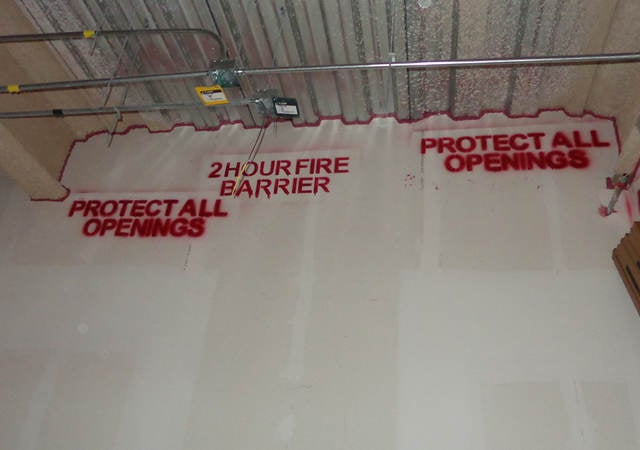September 16, 2020
Architectural ironmongery, also known as builder’s hardware, can have unique compliance requirements. Compliance requirements may vary in response to local commercial needs, governmental regulations and the expectations of specifiers and customers that vary from region to region. Product compliance most often occurs through self-declaration schemes such as those which exist in the European Union (EU) or by a third-party scheme such as UL’s certification, as required in North America and Asia. To add further confusion, other schemes including voluntary certification and industry association recognition programs have been developed that can be a barrier to market entry and product sales. This article will focus on the various schemes, how they operate and where the schemes are commonly accepted.
Now, let us turn our attention to these options individually.
Mandatory CE marking
CE marking is most common in the EU. The EU intentionally moved from the Construction Products Directive to the Construction Products Regulation to remove local barriers to product acceptance for construction products. This regulation covers ironmongery products when such products are included in a technical specification that consists of either a harmonized EuroNorm (EN) standard or an available European Assessment Document (EAD). These products are identified as Level 1 within the compliance scheme due to the fire, security or life safety considerations involved with hardware. To support CE marking, the product must have third-party initial type testing, an Assessment and Verification of Constancy Performance (AVCP) document from the Notified Body and a Declaration of Performance (DoP) from the manufacturer. These documents are required for any product sold in the EU and must be provided even if the company is only importing or marketing the products. Conformity does not end with the issuance of the AVCP and the creation of the DoP as the product must undergo factory product control as specified by the hEN or EAD. This product control can include auditing of samples and materials and/or periodic re-testing of the ironmongery by the notified body. In this scenario, the testing laboratory, assessment body and factory product control provider can be three separate entities when each provider is properly accredited and recognized for the services provided.

Third-party certification
Third-party certification is where the conformity of the product is indicated by use of a compliance mark provided by a third-party that is not the producer or the customer. Third-party certification schemes are widely used across North and South America, Asia and the Middle East. There are variations for each of these, but the general approach is that an entity is accredited to provide a product certification mark. The certification mark can be a logo such as the UL Mark or it could be a country specific mark licensed to the certification entity such as NOM for Mexico or Inmetro for Brazil. Local building regulators, consultants and architects often rely on the presence of a local product certification mark on a product to assist them with determining acceptability of a product for the specified use. That product certification mark is then used by manufacturers as their claim that the product produced complies with the requirements of the specified standard or standards once the product has been tested and certified by the certification agency. The certification provider can be private, or it could be a government-controlled organization. The use of the certification mark is normally permitted for the product manufacturer in return for some form of ongoing factory product control including product audits, sampling and re-testing of key components. The certification often takes the form of a permanent marking such as a label or may be directly marked on the product. Depending on the certification scheme, testing, certification and product control may need to be done by one party. For ironmongery, common certification marks one may see on a product include UL’s Marks for the US and Canada, the ULC Mark for Canada and CCC for China. Third-party certification is often required by either local building regulations or building authorities, as they rely on the label to demonstrate that the product is “listed and labeled” for the use. The certification marking only works when the product or products are within the scope of the accreditations associated with the entity. Private branding is also possible through programs which serve the same purpose as the product mirrors in the CE Scheme. This allows distributors and marketing companies to be able to sell a piece of ironmongery in their own name with the proper certification mark.
Third-party certification example — UL LLC |
| Government Approval | Designated by OSHA, a U.S. Federal Government Agency as a Nationally Recognized Testing Laboratory (NRTL) |
| Accreditation | ISO 17065 through the ANSI Process |
| Certification Mark | UL, cUL, cULus |
| Voluntary Certification Mark | The Mandatory CE Mark plus the optional UL-EU Mark |
Voluntary certification
To bridge the gap for some markets, voluntary certification schemes have been developed to build additional levels of confidence for consumers and building regulators. In Europe, part of the Construction Products Regulation prohibits making additional programs or marking schemes mandatory as these can be a barrier to trade. However, voluntary schemes have been very successful in markets such as the UK where the concept has fully infiltrated the architectural and specification writing communities. A voluntary certification program is normally supported by an existing notified body or assessment body as an adjunct service to their product testing and product assessment services. The concept in theory is to place additional requirements on the product manufacturer that go above and beyond expected compliance requirements. The voluntary certification provider, in return, then publishes a directory with companies and products for people to reference and allows the manufacturer to use the voluntary certification mark on their products. All of which lead some consumers to select a product over competing products as they perceive additional value from the voluntary certification mark and the increased scrutiny provided.
The key takeaway is that these voluntary certification programs still require that a product is tested, inspected and documented through the CE scheme as step one before one can apply the voluntary certification mark. The use of a voluntary certification mark such as the UL-EU Mark can also lead to wider product acceptance in export markets such as the Middle East and India where third-party certification is favored over self-declaration. In the Middle East, this favoritism has its roots in the influence of US building requirements in this region and the reassurance that the piece of ironmongery is not counterfeit or of substandard construction.
Industry recognition programs
One of the largest examples of an industry recognition program is the North America-based Builders Hardware Manufacturers Association (BHMA) and their Certified Products Directory. This example is recognized in the US, Middle East and in locations across Asia. This is an industry program to benchmark product performance and recognize those products that have been tested against various industry standards written and maintained by BHMA. In the BHMA example, the product testing often provides the reliability testing that is required by specification writers while filling a gap in the US and Canada where test methods look at fire and life safety concerns but does not always address extended product durability. The manufacturer can have an association specified test laboratory conduct the needed testing and then submit a product listing for BHMA to publish in their online directory. Once the results are confirmed, the product type, standard and product features are then uploaded to their website for public usage. Other, similar schemes exist in the US for ironmongery to be included in windows and doors.
Market access and compliance
For a company to gain not only market access but to have success in a market, the regulatory and compliance schemes must be recognized and included in the go to market plan. In addition to understanding where self-declaration is permitted or if some form of recognition or third-party certification scheme is involved; there are other compliance aspects to be considered. In many scenarios, the driver for these requirements can be the specifier, consumer or a government regulation that is not contained in the product’s test standard. Some of these other common compliance matters can include topics such as accessibility, environment or health product declarations, and restricted substances. It is also common that the market requirements can come from different sources without always being in one concise document.
Conclusions
All these compliance arrangements require specialized knowledge. This knowledge often means that one should be careful in picking who will be their testing and certification partner for any or all of the schemes mentioned. Whether the intended market is local, regional or global; the right partner should be able to unlock the door to provide the desired access for the ironmongery products that are so commonly used every day on door openings everywhere.
Matthew Schumann, industry manager for fire resistance and containment, UL
Matthew Schumann has worked in the areas of doors, ironmongery and glazing for almost 20 years. He serves as the industry manager for fire resistance and fire containment products for UL, globally.
Get connected with our sales team
Thanks for your interest in our products and services. Let's collect some information so we can connect you with the right person.





